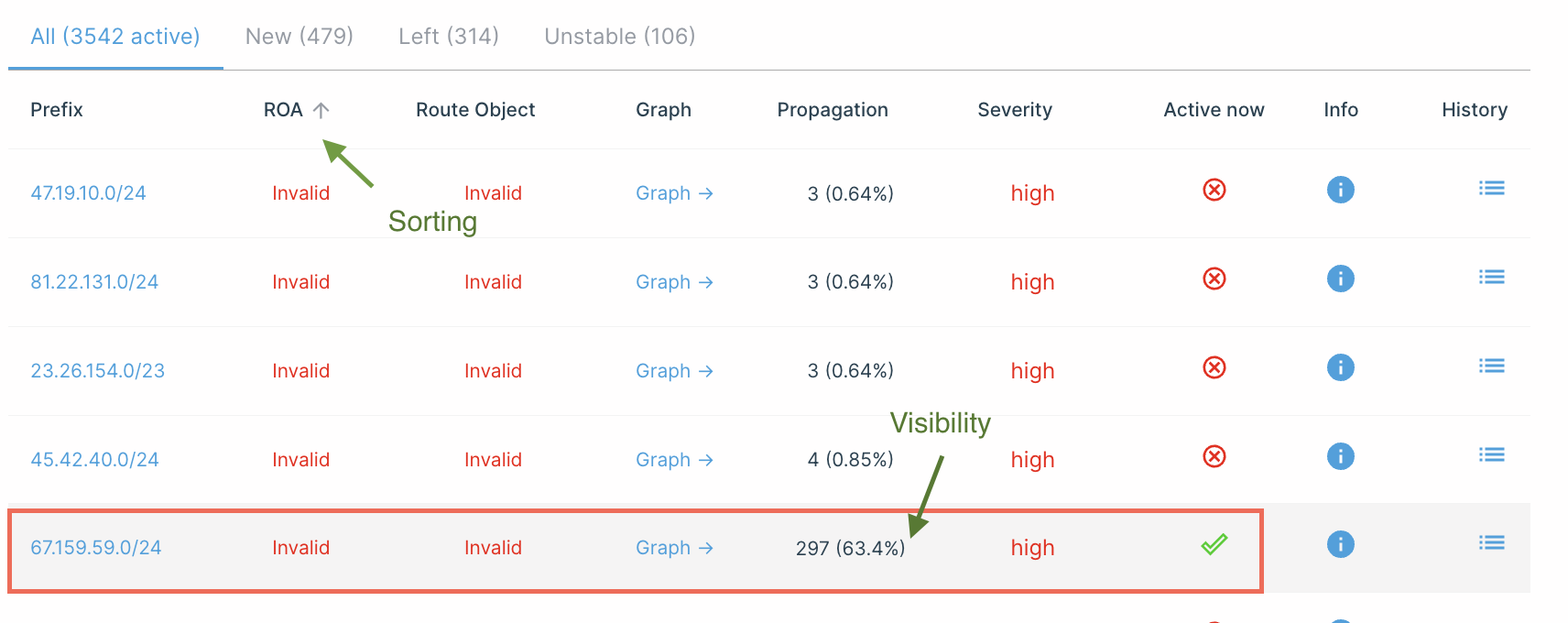Hello there!
Allow us to proudly present the all-new Qrator.Radar website.
In this post, you'll find details about the most significant changes and improvements we've made.
Here's what you can expect descriptions for:
General and Architecture
We completely redesigned our backend: we have unified the backend for both Real-time BGP monitoring and the new radar.qrator.net site. This brings several advantages, including improved data consistency and performance.
Data Consistency
We have worked on enhancing data consistency across different incident counters. Previously, there might have been variations in counter values between the Overview section and the Connectivity and Security Issues sections. Now, you can expect improved data consistency and accuracy.
Improved Performance
We have made significant strides in improving performance. Historical data retrieval has been optimized, resulting in faster data acquisition, particularly in the Route Leaks section (Accepted Route Leaks).
Transfer to React.js
The website has been rewritten using React.js, encompassing all sections. This modern framework allows for enhanced functionality and improved user interactions.
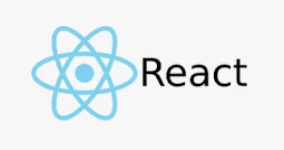
We are excited to present these updates and features, which aim to provide you with a more consistent, efficient, and user-friendly experience on our platform.
Changes by sections
Overview
We have made some changes to improve the clarity of information in the Route Leaks counter. Now, incoming and outgoing traffic leaks are separated, reducing confusion for users. Additionally, we have added new counters that display the number of IP addresses in all speaker prefixes.
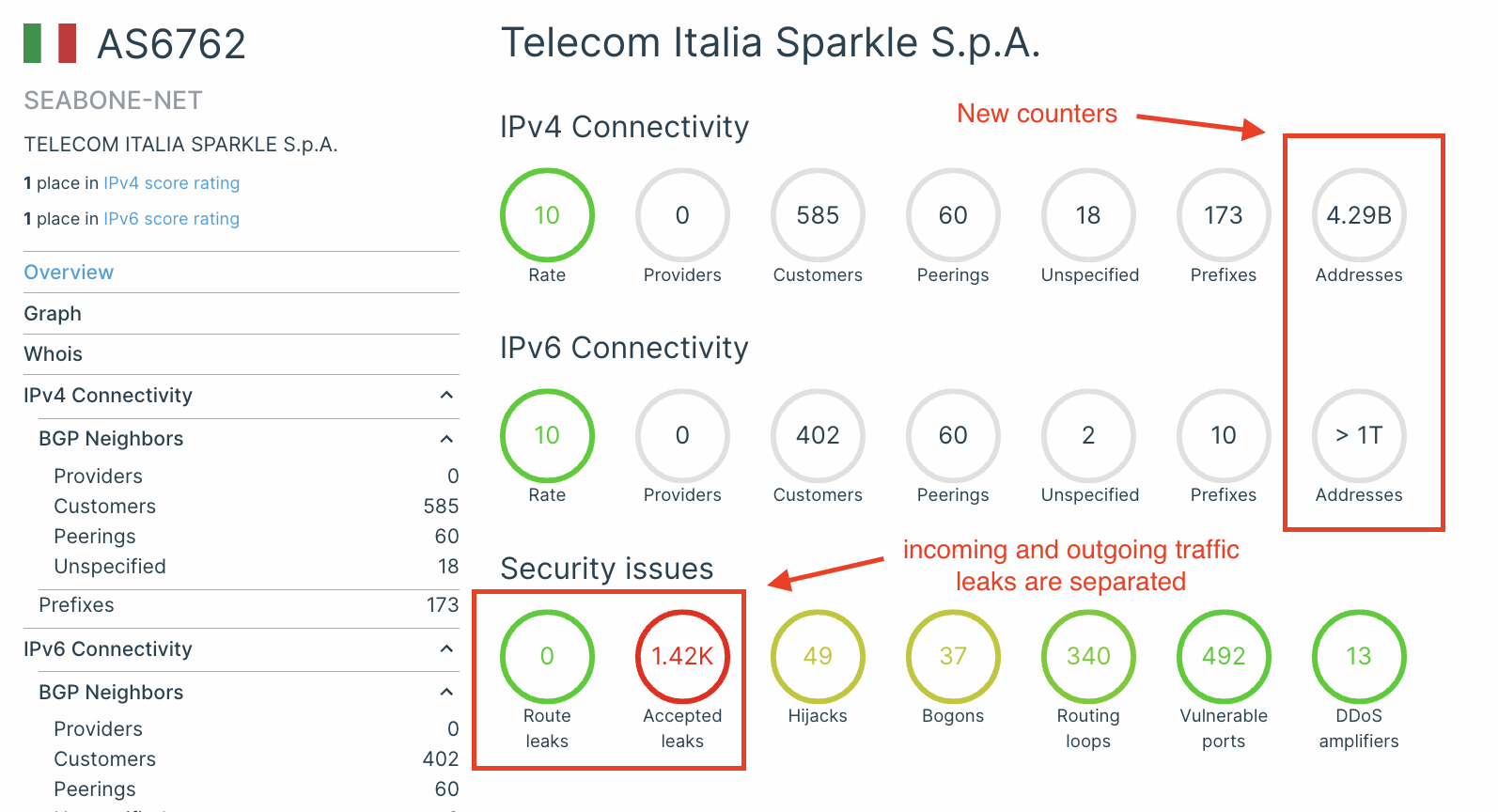
We have also started incorporating PeeringDB data into our dataset, which enriches the information available to our users. This includes additional details about AS, such as their website and address. This is just the beginning!

Graph
We've made improvements to the traffic routing graph. Now, the relationships between Autonomous Systems are colour-coded based on our model. This makes it easier to see which direction the traffic is flowing - up or down - and how it moves between peers.
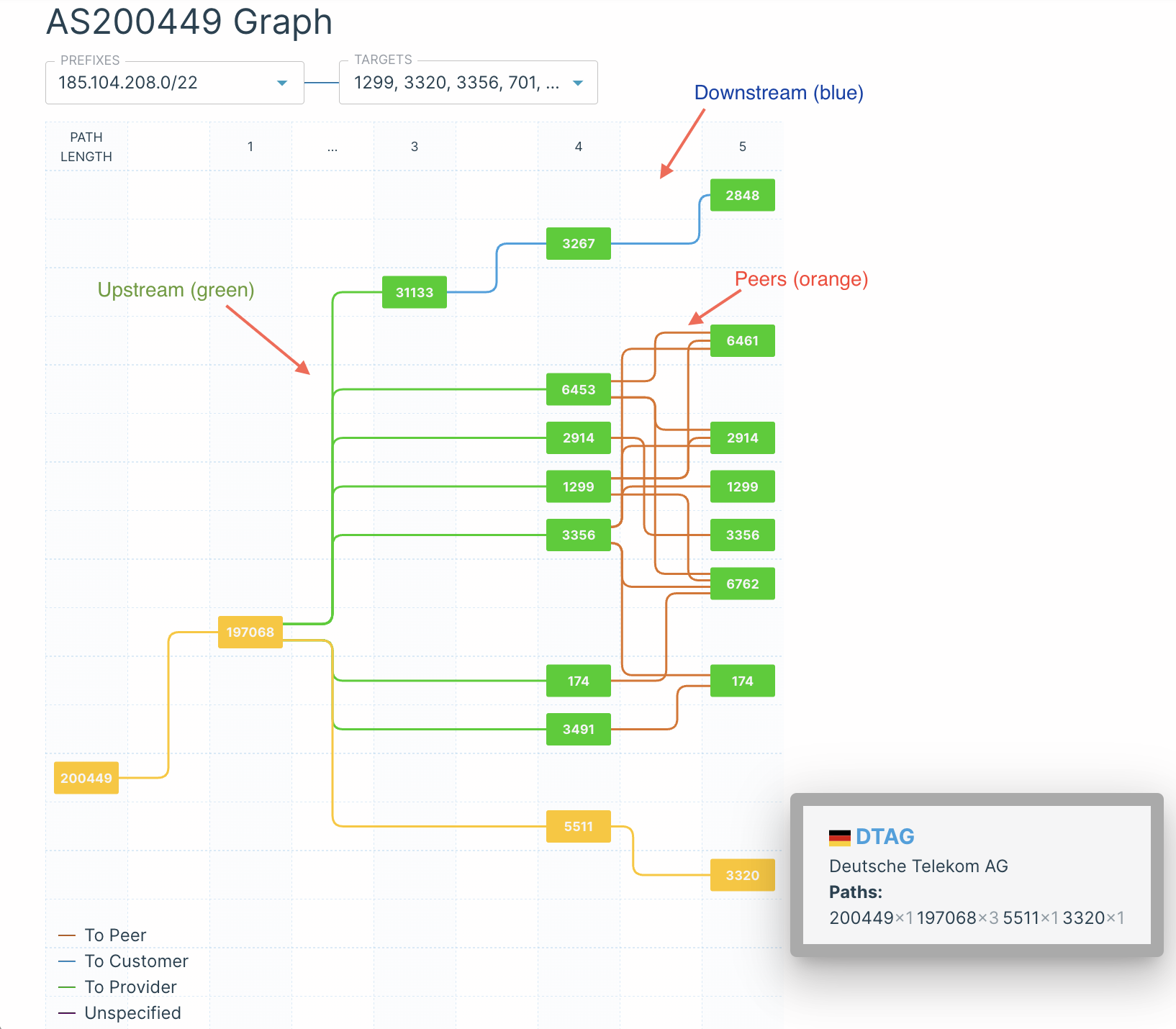
Additionally, we've added country markers to the Autonomous Systems, so you can easily monitor traffic transitions between countries.
Connectivity
- Introducing the "BGP Neighbors" tab, which conveniently displays all your BGP neighbors in one place!
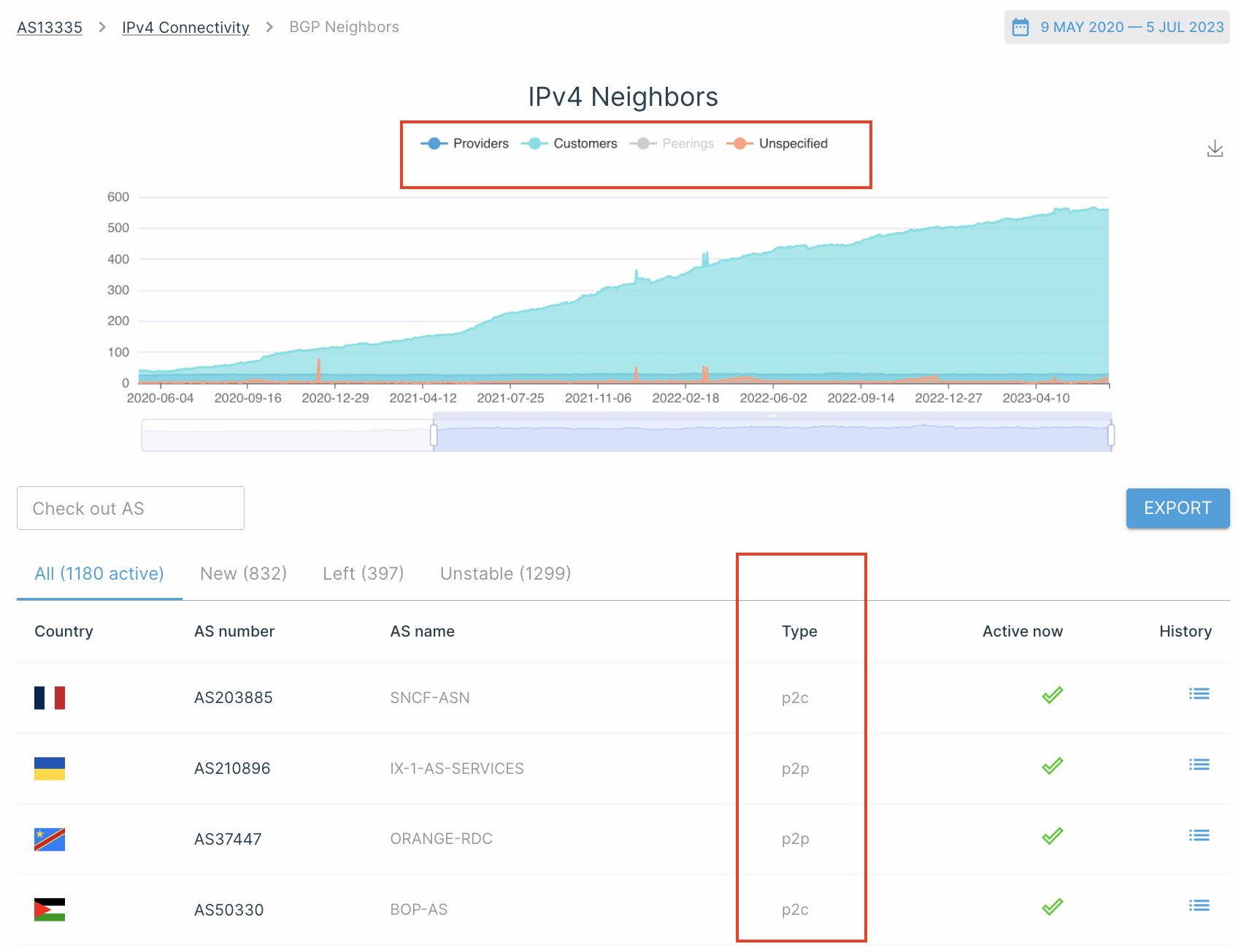
- We have rethought the logic of tabs, including all, new, left, and unstable, to provide a more intuitive user experience.
- Added the ability to export relationships in a convenient CSV format, allowing for instant exportation.
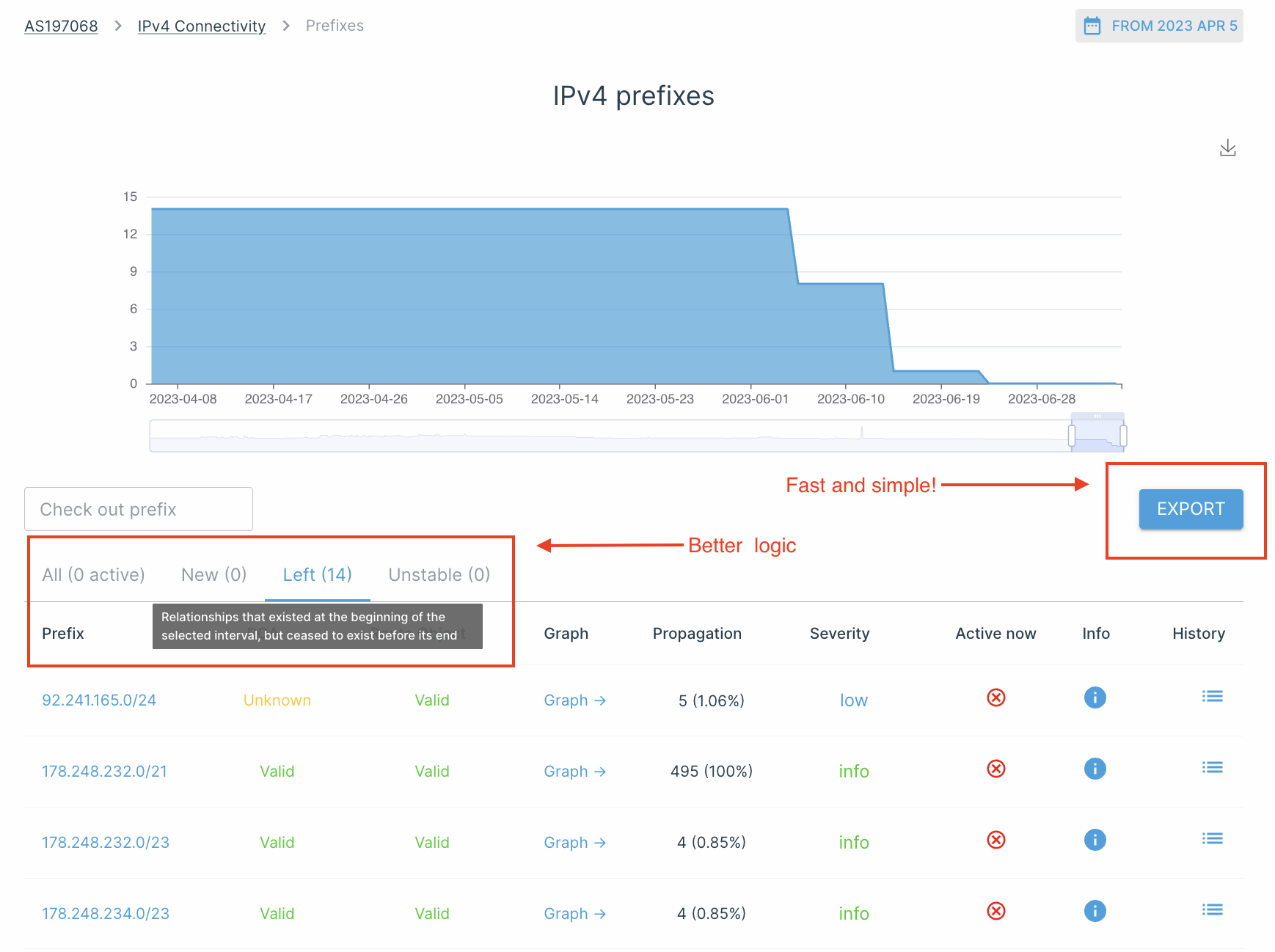
the exported file example:
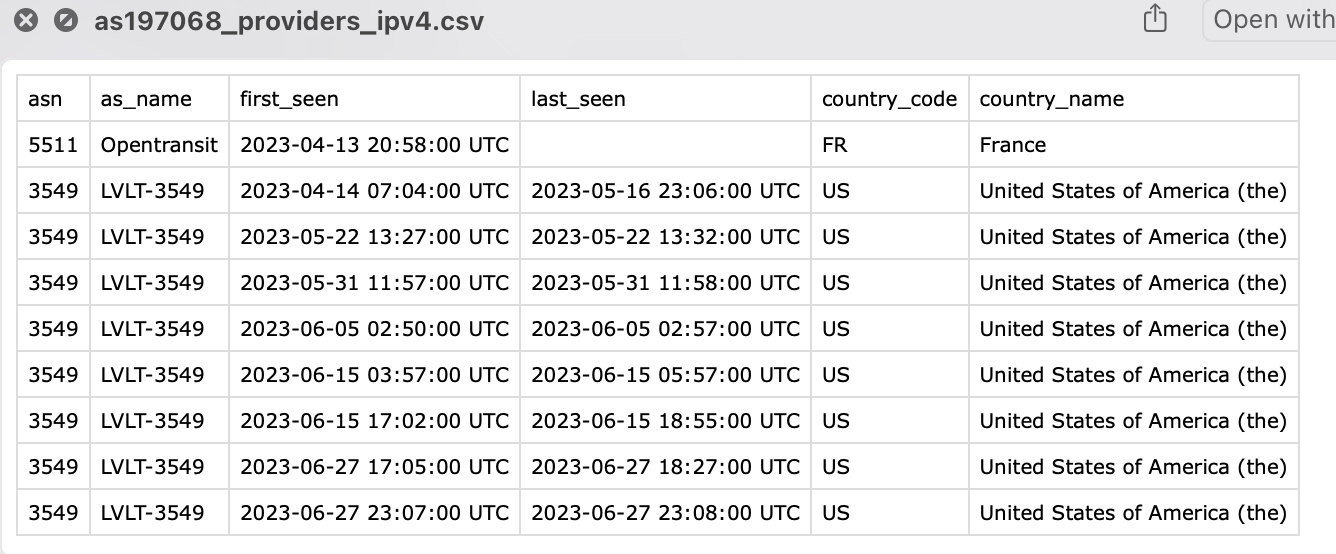
- New fields, such as "propagation," "severity," and "info," have been included to provide insights into how many of our speakers see your prefix.
- Sorting functionality has been implemented, enabling users to sort prefixes based on visibility or the presence of validation objects like RPKI ROA or Route Object.
- RPKI ROA and RIR Route Object Histories allow you to track not only the current state of validation objects for a given prefix, but also the history of their changes.
Security Issues
- We have made it faster for you to view outgoing traffic incidents, particularly the "accepted" types. Previously, it took a long time to gather information on these incidents because there were so many of them and we didn't have efficient indexes. But now, with our new incident storage system, we have significantly reduced the time it takes to select and access these incidents. This improvement is especially noticeable for incidents like Accepted Route Leaks.
- Similar to the "Connectivity" section, we have added "propagation", "severity", and "info" fields to provide users with the ability to assess the criticality of incidents independently.
- Amplifiers now offer the option to sort by amplification coefficient, allowing users to identify the most powerful amplifiers in their network.
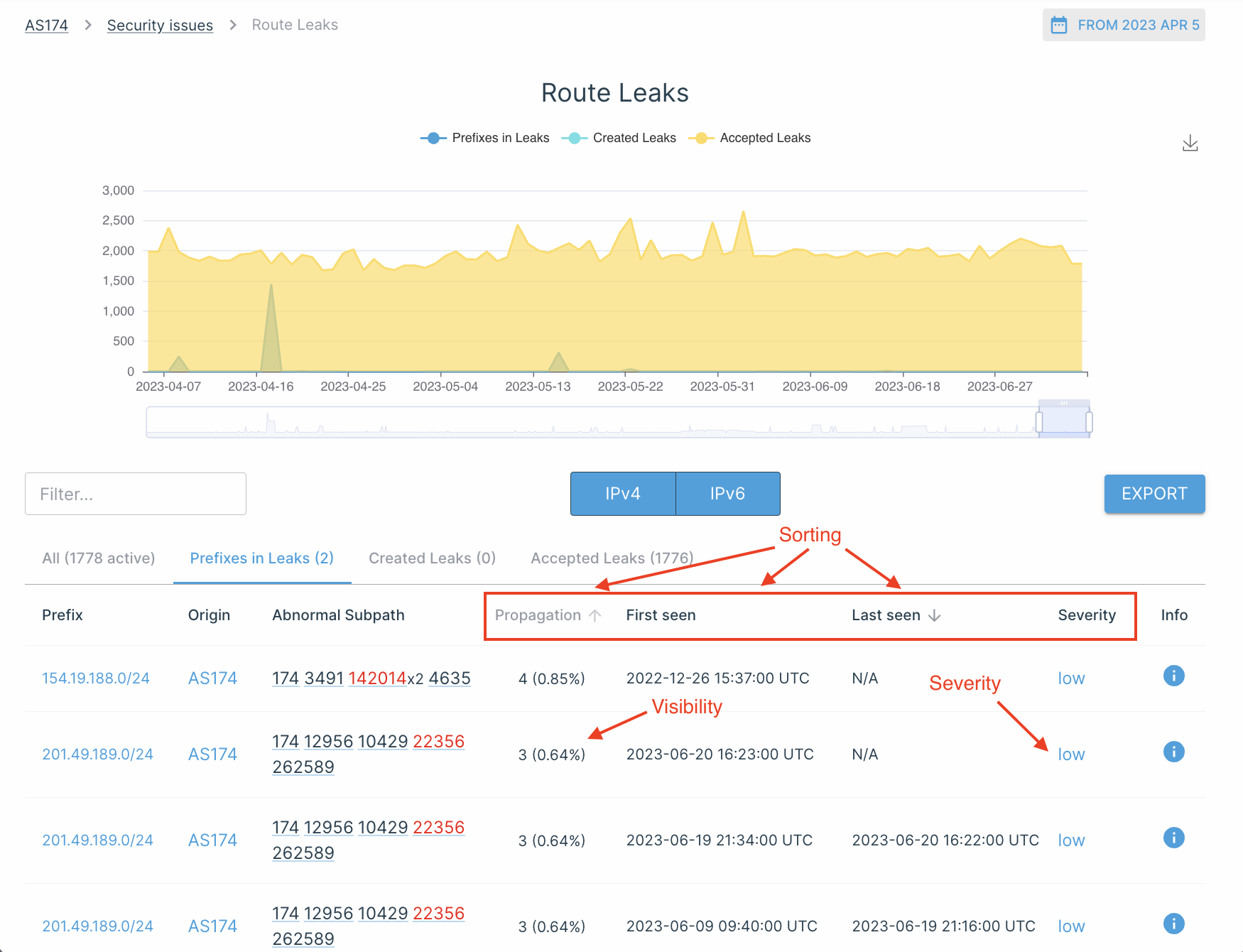
API
We have completely rewritten our API, ensuring backward compatibility with the old one. The new API offers a more flexible distribution of access rights. If you have custom methods tailored to your needs, these methods will only be visible to you in the API section.
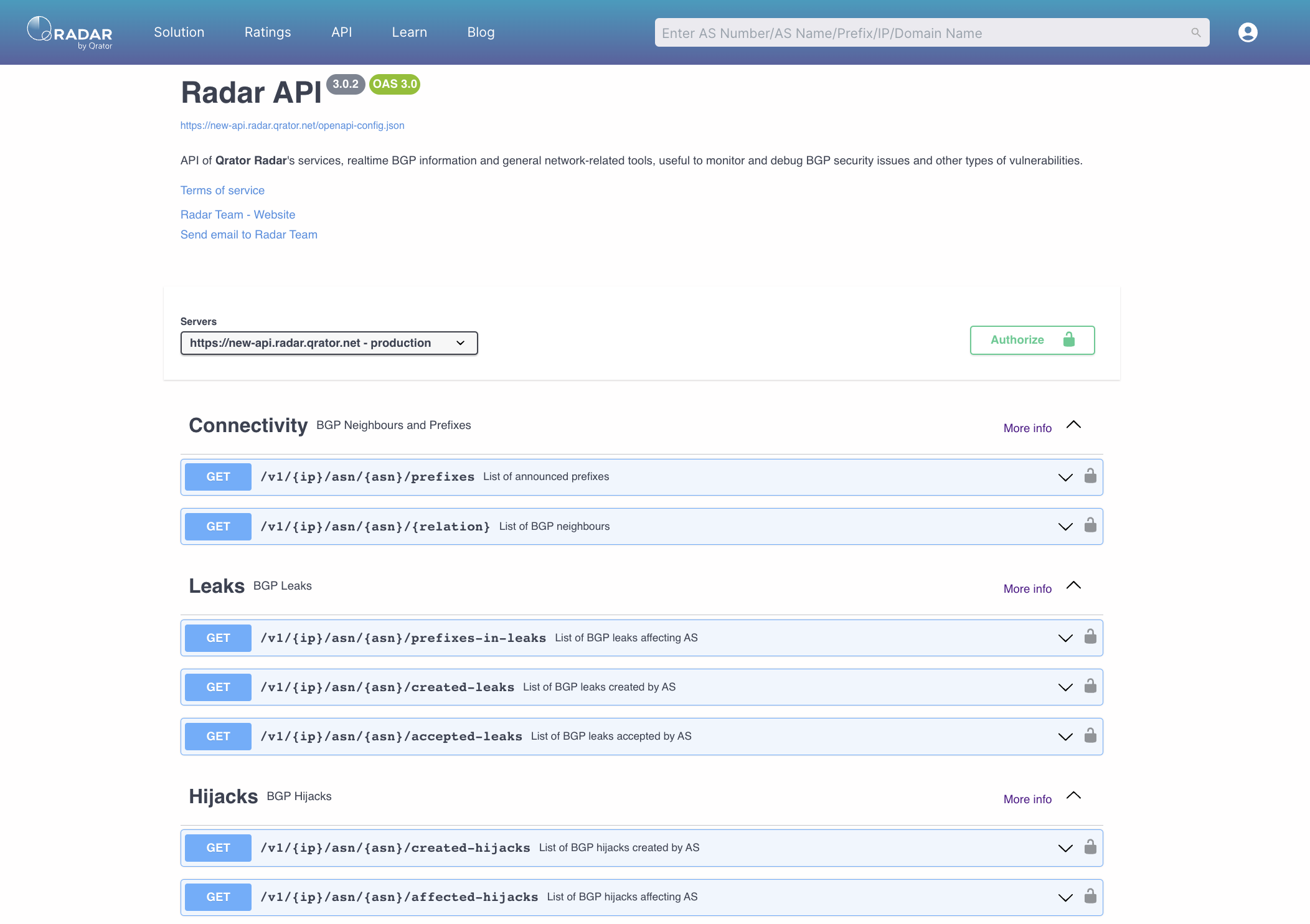
Blog
A "Categories" switcher has been introduced in the Blog section. One of the categories includes annual and quarterly updates about Qrator Labs companies.

Learn Section
The Learn section now presents more useful information in a convenient tree structure. This section replaces the FAQ section from the old website.
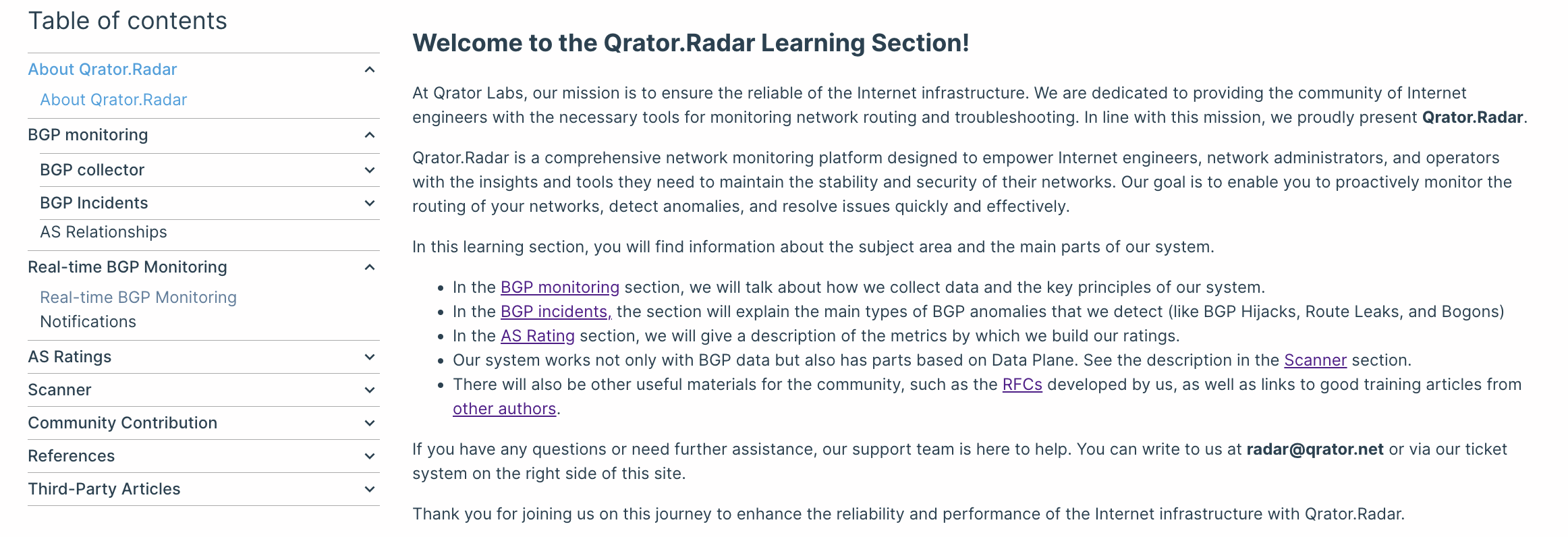
AS Ratings*
We have significantly enhanced our rating system, transforming it into a valuable tool for network planning. The rating system has been expanded from 4 to 16 different ratings (added regional ratings), providing a more comprehensive evaluation of connectivity.
* However, the details of this update will be shared separately, allowing for a more in-depth overview ;)
Known bugs
We know that there are several known issues on our website. Here are some of them:
- Scan incidents are based on incomplete data
- Performance improvements are possible

